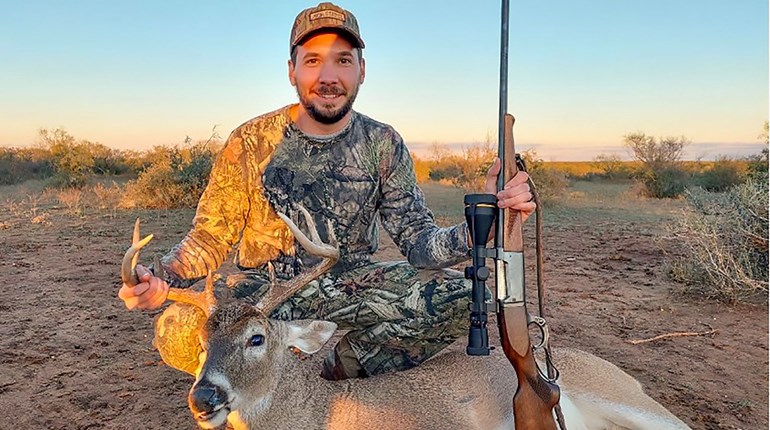
Unless you follow this stuff closely, you probably hadn’t heard this. And why would you have? Although it was breathlessly reported in some of the year-end roundups, the rule actually went into effect in September. And, as a result … nothing happened. Nothing at all.
This pattern—of a freak out, followed by silence—is a boringly familiar one, the product in part of a widespread misunderstanding as to how common and innocuous open carry laws are. When, in 2015, Texas repealed its prohibition on the open carry of handguns, critics cast the move as both an innovation and as a neat illustration of how “crazy” the Lone Star State had become. Naturally, neither accusation was correct. Texas was, in fact, the 45th American state to respect the right to bear arms, and, far from blazing trails, was joining liberal states such as Connecticut, Rhode Island, Massachusetts, Hawaii, Maryland and New Jersey. In so doing, it was not jumping on a bandwagon, but restoring an ancient and imperative right that pre-dates the United States by centuries.
And still the critics carped.
To understand just how misplaced was the reaction, consider that Texas’ open carry law was not only one of the last in the United States, but that it is also among the strictest. In Texas, as in 15 other states, citizens must apply for a permit before they can carry openly; in the remaining 30 states in which open carry is protected—including in decidedly non-Texas-like states such as Delaware, Vermont and Oregon—no such requirement exists. A quick review of the law confirms that this area of policy doesn’t break down easily along modern political lines. Among the five states that prohibit open carry completely, there are three that one would expect to see: California, Illinois and New York. But surprisingly enough, so does Florida, and so does South Carolina. Likewise, among the states that limit open carry to rural areas, we find Oregon, Nebraska and Missouri, but not Delaware, Connecticut or Hawaii. Even in states with anti-gun legislative majorities, open carry has been mostly left alone.
As Joyce Lee Malcom has observed, “In the course of the 18th century, the right of individual Englishmen to be armed began to be regarded as protecting not only the individual but the constitution itself.”
In part, we have tradition to thank. Long before James Madison and company elected to entrench the right to bear arms in the U.S. Constitution, the English had scrabbled slowly toward making it the norm. In the ninth century, King Alfred simply assumed the citizenry would be armed. So, too, did Henry II, whose 1181 Assize required every freeman to keep arms, and to be ready to bear them in the common defense. The 1689 Bill of Rights codified that “the subjects which are Protestants may have arms for their defense suitable to their conditions and as allowed by law,” and, once filtered through Blackstone during the following century, this idea became inextricable from the maintenance of English order. As Joyce Lee Malcom has observed, “In the course of the 18th century, the right of individual Englishmen to be armed began to be regarded as protecting not only the individual but the Constitution itself.” By the time the founders wrote their charter, it had become an article of faith that, as Blackstone put it, Congress was not allowed to “pass a law prohibiting any person from bearing arms.” At the time he was writing, “bear” had a clear and unmistakable definition—to “carry weapons in case of confrontation.”
So indisputable is this proposition that, in order to reach its cynical opinion in Peruta, the en banc majority had to assiduously ignore the question. “There may or may not be a Second Amendment right for a member of the general public to carry a firearm openly in public,” the Ninth Circuit wrote in 2016. “The Supreme Court has not answered that question, and we do not answer it here.” That’s convenient. Quite how the Circuit squared this with Heller’s confirmation that the Second Amendment served to “guarantee the individual right to possess and carry weapons in case of confrontation” is as unclear now as it was two years ago. Regardless, the ploy was an obvious one. Even the 9th Circuit can’t twist language that brazenly.
But this, in turn, raises a question: Why, if open carry was so widespread and so obviously protected by the U.S. Constitution, has it needed to be reintroduced or “restored”? The answer, I’d venture, is twofold. First, because the Second Amendment is the most poorly enforced provision within the Bill of Rights, and because the judiciary’s reluctance to engage with infringements applies as much to the “bear” part as to the “keep.” Second, because for some unpleasant historical reasons, the open carrying of firearms has been banished from a host of public squares. During the era of Reconstruction, almost every former Confederate state decided that it did not want freed blacks to exercise their rights and, in consequence, that it would strip them away from everybody. As ever, the road toward justice was a winding one.
Interestingly enough, one of those states was Texas, which, in 1871, ceased to be a haven for legal gun owners and began to impose fines upon anyone who carried “on or about his person, saddle, or in his saddle-bags, any pistol.” Originally, the measure was intended to prevent former Confederates from obtaining weapons. But, once the Democratic party took back power, it came to be enforced exclusively against African-Americans. In the same period—and for the same reasons—the Texas Supreme Court reversed itself completely on the matter. In 1859’s Cockrum v. State, the court affirmed that both the Second Amendment and the Texas Constitution protected an almost absolute right to bear arms. But in 1872—just 13 years later—the court flatly denied that any such right existed in either document. In the intervening period, nothing had changed in either text. Driven by panic and animus, legislators simply ignored the rules that bound them.
What can explain the remaining states’ unwillingness to undo this historical wrong? And what is behind the considerable opposition staged by gun control groups such as the Brady Campaign and the Coalition to Stop Gun Violence? Mostly it’s fear, with a side helping of ignorance. As with concealed carry, opponents of the right to open carry constantly predict that any liberalization will lead to shootouts in the street and widespread “intimidation” of those who aren’t armed. But this never happens. Not only do Americans seem to regulate themselves extremely well within civil society—most gun owners, like other citizens, do not want to cause alarm while exercising their rights—but it is now beyond statistical doubt that open carry states are every bit as safe as non-open carry states—and perhaps, even safer. And so, as it has for two decades, crime continues to drop. And so, as has been the casefor years, Americans who have concealed-carry permits are more law-abiding than is the rest of the citizenry. Slowly but surely, state after state restores its Second Amendment protections. And nothing bad happens.
Almost every former confederate state decided that it did not want freed blacks to exercise their rights and, in consequence, that it would strip them away from everybody.
The nightmare scenario that is trotted out to scare people is, as usual, a phantom. Indeed, it doesn’t even make sense on its face. As the fbi confirmed in a 2006 study, criminals almost never use holsters of any variety, which means that, in practice, criminals do not open carry. And if criminals do not open carry, then the only people open carrying are non-criminals. And … well, you do the math. What, exactly, are we supposed to be worried about here?
During Maine’s constitutional-carry debate, advocates of reform liked to point out that it was already legal in the state to carry a handgun without a permit—until you put on a coat. With open carry, the opposite issue obtains: In states without open carry protections, residents are licensed to carry firearms—until they remove their jackets. On its face, this is absurd: Carry is carry is carry, and one’s attire cannot determine one’s intentions. That we spend so much time distinguishing between the two methods illustrates a naive belief in the talismanic quality of laws. Regardless of where it sits on his body—“or in his saddle-bags”—a gun is only as dangerous or as useful as the man carrying it.
There is some work ahead. That 45 states boast some form of open carry is a good thing, but it is not as good a thing as having 50 states that follow the law to a fault. Ensuring that the remaining five are added to the list is imperative, if just on legal grounds. The Constitution does not contain exemptions for either historical anomaly or for modern recalcitrance, and it must not be divided up by geography. “Bear” means today what it meant in 1791, and courts reversing themselves on matters of plain language is as destructive now as it was then. Whatever their reasons or their circumstances, states do not get to opt out of the legal order. Florida, South Carolina, Illinois, California, New York—these places are all in America, and they must behave as such. The games that have been played by, for example, the 9th Circuit Court of Appeals, should not be allowed to stand.
Moreover, we might remember that it is only of limited utility to examine bluntly whether a state protects open carry or whether it does not, for there are all sorts of subdivisions within that classification, and there are still a handful of states that pay only lip service to the law. Some states have horribly restrictive carry rules to start with, and they apply them to open carry as much as to concealed carry; some limit where one can carry openly; some require permits that are far too difficult to get; some draw a distinction between long guns and handguns; and so forth.
Overall, though, things are looking up. The last vestiges of the Jim Crow restrictions are being removed. The right to bear arms is being restored. And open carry, far from being a niche idea that is reserved to the outlier states, is the norm across most of the United States. This is one piece of good news that we don’t hear much these days. But then we wouldn’t, would we?
Charles C.W. Cooke is the editor of National Review Online.


































